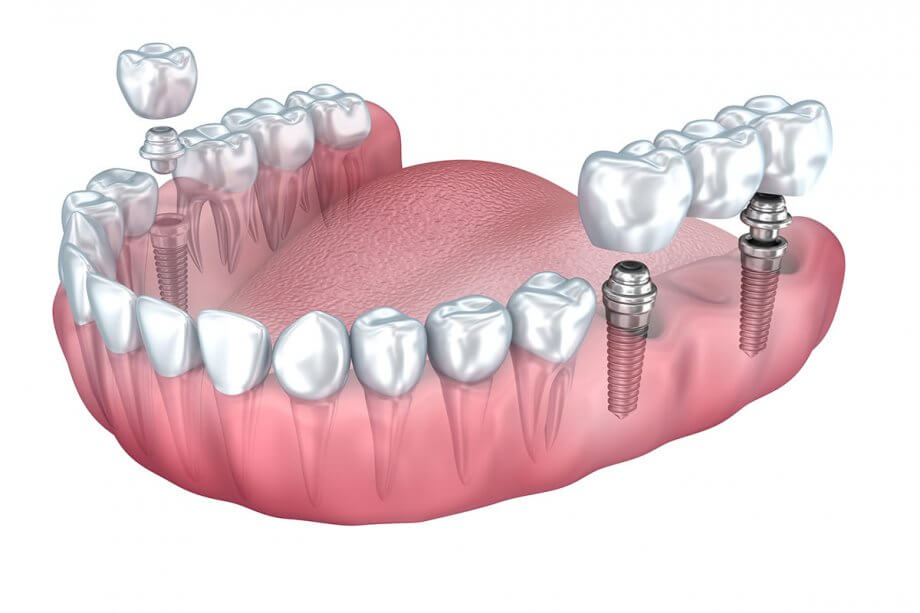If you are missing a tooth, you might need to decide between a dental implant and a dental bridge. There are pros and cons to both solutions, so it is important to understand your choices. This will allow you to select the option that is truly right for you.
What Is a Dental Implant?
A dental implant is a tiny screw made of biocompatible titanium. While you are numb, it is inserted into the jawbone, replacing the tooth roots, and allowed to heal for three to six months. At this point, it is fused with the jawbone, creating a stable, strong base for a highly realistic replacement tooth. If you are replacing a tooth in the front you will need to wear a partial denture for aesthetics during the healing process.
Benefits of Dental Implants
Dental implants have many benefits, including:
Natural appearance and function: Dental implants look, function, and feel just like natural teeth.
Jawbone health: Jawbone deterioration begins when a tooth is removed. The body responds to a missing tooth by breaking down the bone to recycle the calcium and use it somewhere else in the body. A dental implant replaces the tooth roots, stopping the recycle process and preserving the jawbone.
Protecting adjacent teeth: A dental bridge requires healthy tooth structure to be removed from the adjacent teeth to support dental crowns. A dental implant stands alone, protecting the surrounding teeth.
Virtually maintenance-free: With excellent oral hygiene and regular dental visits, a dental implant can easily last a lifetime.
Drawbacks of Dental Implants
Dental implants also have a few drawbacks:
Cost: Dental implants have a higher up-front cost than dental bridges, and insurance does not always cover them.
Surgery: Dental implant placement is a minor surgery with the same minimal risks as any other oral surgery, including infection or nerve damage. While still very low, these risks are slightly higher for those with an underlying health condition such as diabetes or heart disease.
Time: Bone heals slowly. Unless you receive an immediate-load implant, you must use a temporary solution for three to six months.
What Is a Dental Bridge?
A dental bridge is anchored to the natural teeth at either end of a run of one or more missing teeth. A traditional bridge is secured with crowns, while a Maryland bridge is attached to the backs of the teeth.
Advantages of Dental Bridges
Dental bridges have a few advantages, including:
Affordability: Nearly all insurance plans cover dental bridges, and they are less expensive up front than implants.
Simplicity: No oral surgery is involved. It is simple to prep the teeth and place the bridge.
Speed: There is no healing period required for a dental bridge. At your first appointment, your natural teeth will be prepared and impressions taken for the dental lab. In a few days, when the bridge is ready, you will return to have it placed.
Disadvantages of Dental Bridges
Dental bridges also have significant disadvantages:
Adjacent Tooth Damage: Anchoring the bridge requires a fair amount of healthy tooth structure to be removed from the neighboring teeth. This puts those teeth at increased risk for tooth decay and even fracture.
Less Aesthetic: Dental bridges can be reasonably aesthetic, but they connect the teeth to each other. A dental implant stands alone like a natural tooth, providing a more aesthetic appearance.
Periodic Replacement: While dental implants can last a lifetime, dental bridges have an average lifespan of approximately a decade.
There are no “one size fits all” restorations in dentistry. Your dentist will help you decide which option best meets your needs, goals, and budget.
Ready to Get Started?
Now in our second generation of family ownership, McDonald Family Dentistry provides a full line of general, restorative, pediatric, and cosmetic dental services. Contact us today at 408-779-9335 to schedule your first appointment.
